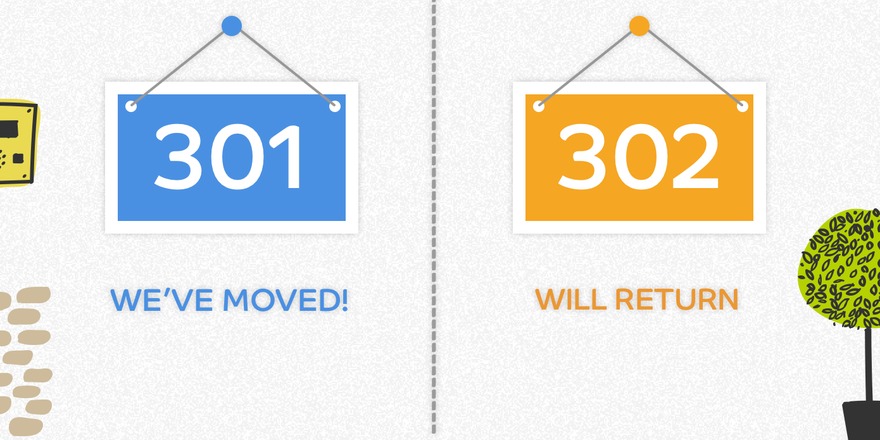You have a website with a domain name. After a while you decide that you don’t like that domain name. What do you do? Today, I’m going to share how you can use a 301 or 302 redirect, as well as how one differs from the other.
301 redirect
So first off, say you have a domain name. Let’s say you started out with WXYZ.com and you decided you know what, I rather dislike these four-letter domain names. They’re too long. I actually want a two-letter domain name. I just want YZ.com. This is when you want to do what’s called a 301 redirect.
A 301 redirect tells Google that hey we’ve changed names. We have a new domain name. Take all our existing rankings from this site and transfer it over to this new site. It roughly takes anywhere from a few weeks to sometimes up to a few months to fully kick in.
But when you do a 301 redirect you’re telling Google we’ve permanently moved. Think of it as changing an address. When you move locations, a new flat, a new house, you’ll tell the post office that hey I changed locations and now they forward all letters to your new address. The same thing happens when use a 301 redirect.
302 redirect
A 302 redirect on the other hand is telling Google hey we temporarily changed locations. Think of it as you’re going to a summer holiday home and you’re staying there for a little while. So you want your letters forwarded there for a just few months and then you’re going to go back to your original home. That’s the same way it works on the web.
Let’s say you offer winter products and summer products. So your domain name is YZ.com/summer and you decide that hey summer’s over, we’re now going to shift into winter products.
Well you can do a 302 redirect saying hey we’ve moved YZ.com/summer to YZ.com/winter. That tells Google, hey temporarily send all the traffic in the rankings to YZ.com/winter. You can do this for whole domain names and you can do this for web URLs as well.
I could continue with the article and say here’s how to do it but I don’t recommend that you actually do the redirects yourself unless you’re technical. The point I’m trying to make is one little glitch or mess-up can really hurt your traffic. Just go to upwork.com and on that website you can find developers for a 100 or 200 quid.
So in conclusion, where ever you go on the web, you can take the traffic with you. If you have found this article helpful, please don’t forget to share it on LinkedIn, Twitter or Facebook.





Pingback: An Easy Way to Become the MacGyver of Search Traffic | Faisal Anwar